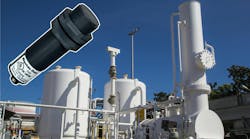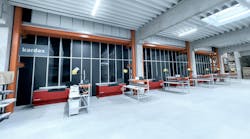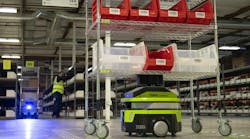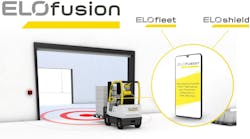The GSX combined fork sensor combines the advantages of light and ultrasonic sensors—making it suitable for labeling machines used in the packaging industry.
Affixing labels of various shapes, sizes, and materials on products and packaging by means of a labeling machine is one of the fundamental tasks carried out in the packaging industry. For its precise positioning, the label must be safely and reliably detected—even at high conveyor speeds. This task is performed by fork sensors, which house the transmitter and receiver in a single device and ensure high operational safety. These devices are not only very sensitive, but they are also easy to mount and do not require any alignment. Until now, Leuze offered two fork sensor models for this purpose: light and ultrasonic. A new version that combines light and ultrasonic is now available.
The GSX fork sensor is the world's first sensor of its kind and combines the two detection methods of ultrasonic and light in a single housing. It brings together the advantages of both principles and can be used very flexibly. It reliably, quickly, and precisely detects a wide range of labels, regardless of their material and surface characteristics. This increases the machine throughput and avoids downtime. Even labels made of inhomogeneous cavitated BOPP material can be reliably detected through the optical operating principle. The fork sensor is especially well suited for applications in which various types of labels need to be detected. Until now, this often required several different fork sensors. The user saves not only space but also additional time and costs of installation. The fork sensor can be quickly and easily set up via the teach button to teach the label-carrier combination. Only one universal mounting position is required for all objects.
IO-Link for easy configuration and recipe management The GSX fork sensor features an IO-Link interface for easy configuration. The interface can be used to enable remote teaching or to lock the buttons, among other things. In addition, recipe management facilitates easy format changeovers when replacing rolls. This means that re-teaching is not necessary when changing rolls to a different label format. The format is changed quickly by selecting the appropriate parameter set for the corresponding label format. This parameter selection is directly carried out on the labeling machine via the HMI. It saves not only setup time, but it also increases the production volume and makes the system more economical.





